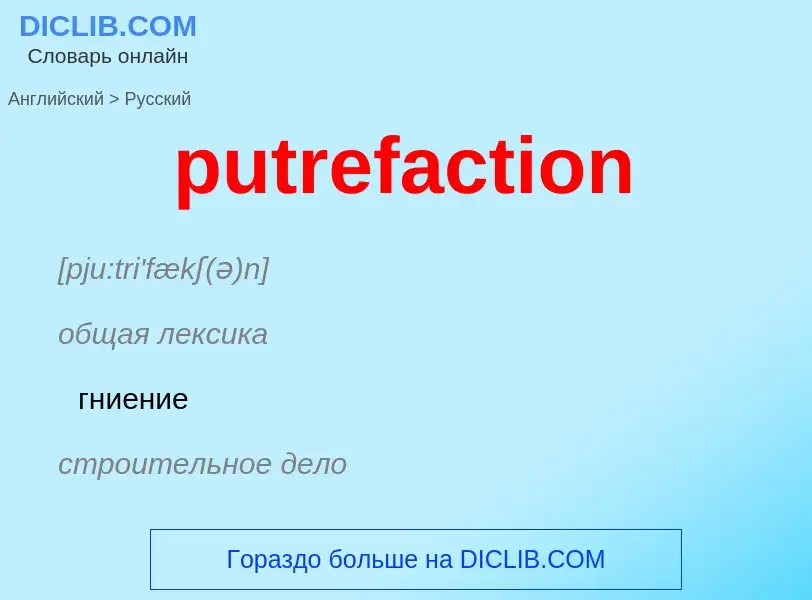Translation and analysis of words by ChatGPT artificial intelligence
On this page you can get a detailed analysis of a word or phrase, produced by the best artificial intelligence technology to date:
- how the word is used
- frequency of use
- it is used more often in oral or written speech
- word translation options
- usage examples (several phrases with translation)
- etymology
putrefaction - translation to russian
[pju:tri'fækʃ(ə)n]
общая лексика
гниение
строительное дело
анаэробное сбраживание
нефтегазовая промышленность
разложение (гниение)
существительное
общая лексика
гниение
разложение
гнилость
моральное разложение
развращённость
коррупция
продажность
Definition
Wikipedia
Putrefaction is the fifth stage of death, following pallor mortis, algor mortis, rigor mortis, and livor mortis. This process references the breaking down of a body of an animal post-mortem. In broad terms, it can be viewed as the decomposition of proteins, and the eventual breakdown of the cohesiveness between tissues, and the liquefaction of most organs. This is caused by the decomposition of organic matter by bacterial or fungal digestion, which causes the release of gases that infiltrate the body's tissues, and leads to the deterioration of the tissues and organs. The approximate time it takes putrefaction to occur is dependent on various factors. Internal factors that affect the rate of putrefaction include the age at which death has occurred, the overall structure and condition of the body, the cause of death, and external injuries arising before or after death. External factors include environmental temperature, moisture and air exposure, clothing, burial factors, and light exposure.
The first signs of putrefaction are signified by a greenish discoloration on the outside of the skin on the abdominal wall corresponding to where the large intestine begins, as well as under the surface of the liver.
Certain substances, such as carbolic acid, arsenic, strychnine, and zinc chloride, can be used to delay the process of putrefaction in various ways based on their chemical make up.
Body farms are facilities which study the process.

.png?width=200)
![Putrefaction in human hands after several days of one of the [[Oba Chandler]] victims underwater in Florida, United States Putrefaction in human hands after several days of one of the [[Oba Chandler]] victims underwater in Florida, United States](https://commons.wikimedia.org/wiki/Special:FilePath/Rogers body.jpg?width=200)
